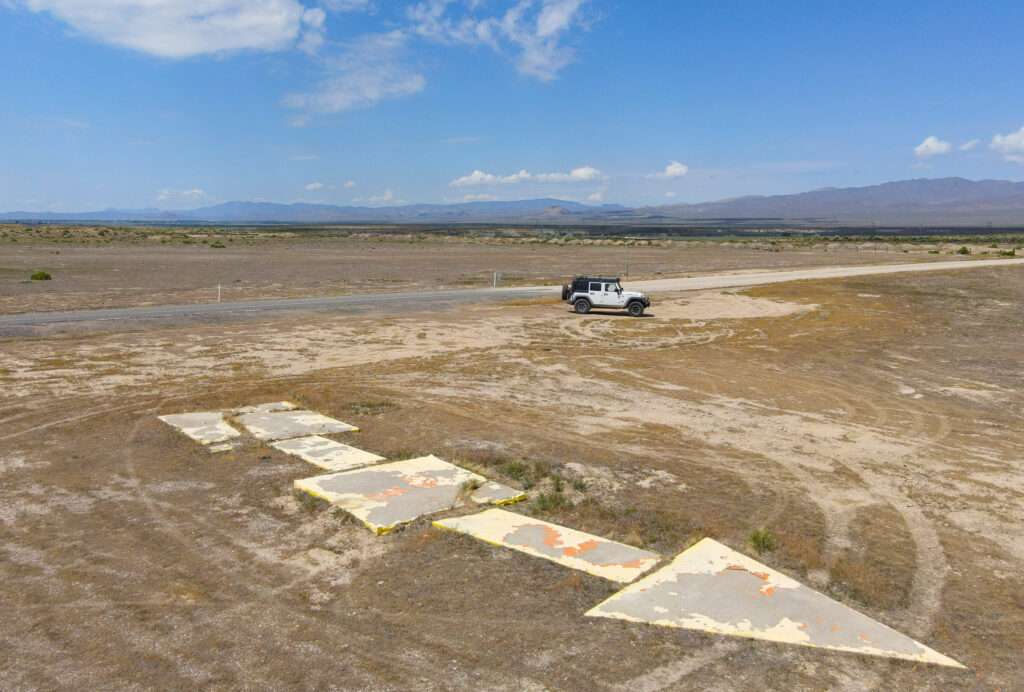
Outside Oreana, alongside I-80, is a giant yellow block arrow pointing east. You can follow the arrows across the state and even across the country. These aren’t some low-level alien technology for UFOs, but they were used for flight navigation.
Before the development of radio communications, pilots for the U.S. Airmail Service used these arrows to traverse their way across the country to deliver mail. Today, some of the arrows survive, and while many are difficult to reach, others, like Oreana, are right off the freeway.
Mail during the Gold Rush
With the discovery of gold in Coloma, California, on January 24, 1848, many enterprising souls sought their riches in the undeveloped wild west. Emigrants and miners not only left conveniences such as houses, stores and transportation, but they also forfeited mail service. The few letters they would receive were be carried by friends on wagon trains or a pack mule train. News from home would take months to traverse the continent.
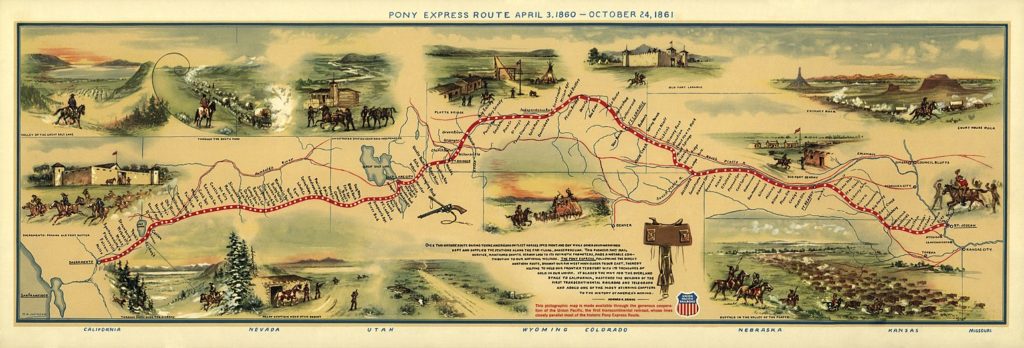
(Photo credit: National Pony Express Association)
Express mail service in California started in the 1850s. Companies delivered postage, newspapers, parcels and even gold dust by riders mounted on mules. As roads were not yet established, they traversed primitive trails in mountainous locations. During winter, Snowshoe Thompson delivered mail across the Sierra using cross-country skis.

The Pony Express made its first ride on April 3, 1860, taking ten days to deliver mail between St. Joseph, Missouri and Sacramento, California, remarkably fast for the time. The Transcontinental telegraph was completed on October 24, 1861, making the historically famous Pony Express obsolete two days before the completion of their final ride.
Fly like an eagle
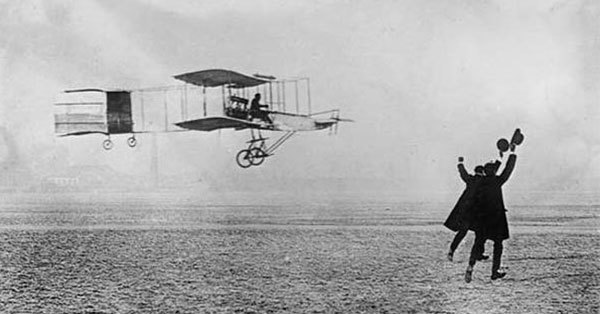
(Photo credit: History Collection)
In North Carolina, on December 17, 1903, the Wright Brothers made their famous first flight. Mail carriers took notice of the new advancements. Fred Wiseman flew the first unofficial airmail flight in 1911, delivering three letters between Petaluma and Santa Rosa, California. On September 23, 1911, pilot Earle Ovington made the first authorized U.S. mail flight in a Bleriot Monoplane.

(Photo credit: Look & Learn)
Airmail service was successful, and service expanded. The Transcontinental Airmail Route was established on August 20, 1920, when the first postal packages traversed the country via a modified Curtiss JN-4D, known as a “Jenny.”
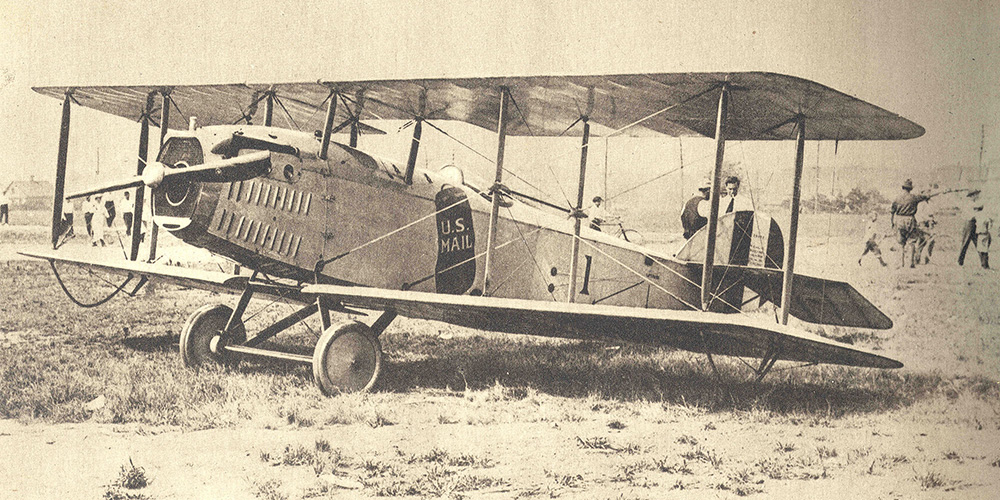
(Photo credit: Smithsonian Postal Museum)
Arrows and beacons
Before the invention of radio and air navigation, pilots flew their course across the United States, using visual landmarks. Transcontinental mail services were limited to daylight hours and good weather, and even then, thirty-four pilots died during their service between 1918 and 1927.
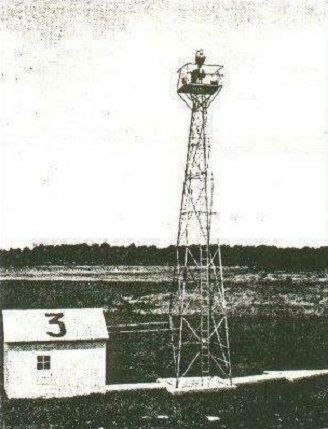
(Photo credit: Sometimes Interesting)
The U.S. Congress approved funding in 1923 to create a system of concrete arrows and lighted beacon towers to guide pilots. One thousand-five hundred beacons were located at three to five-mile increments. Arrows were 50-70′ long and painted bright yellow to increase visibility. The center section was square to support a 50-toot tower. Beacons contained rotating lights on top and a second set of green and red lights transmitting Morse code.
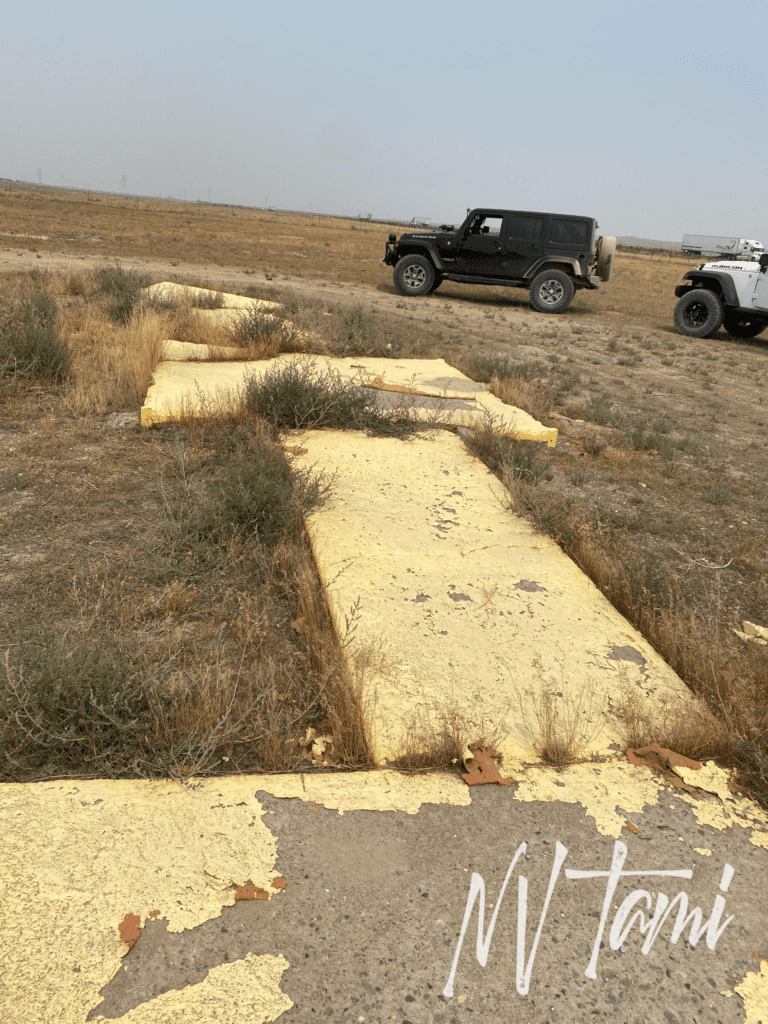
The first segment completed was from Chicago, Illinois, to Cheyenne, Wyoming. This section was developed first so pilots could leave either coast during the day and fly through the beacon stretch overnight. As a result, July 1, 1924 saw the first nighttime flight cutting mail delivery time in half.
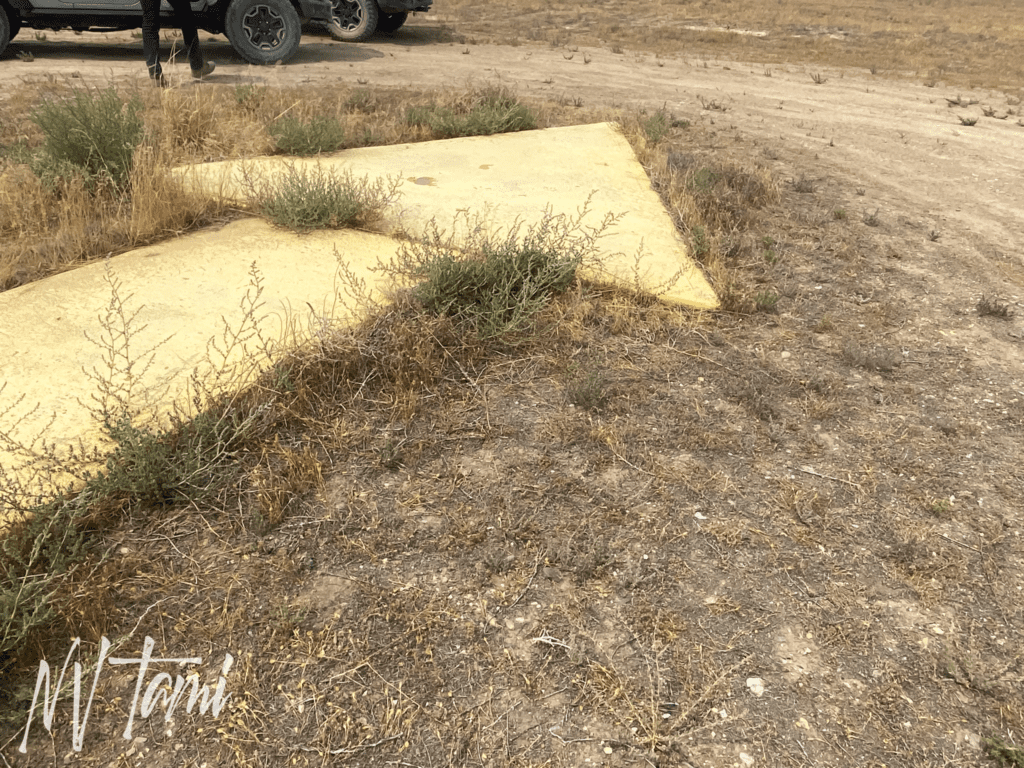
Radio killed the airmail arrows
The airmail service improved beacons in the late 1920s, but the invention aircraft radio made most beacons and arrows obsolete by the 1930s. A few beacons continued to operate into the 1940s, with the last one discontinued in 1973.
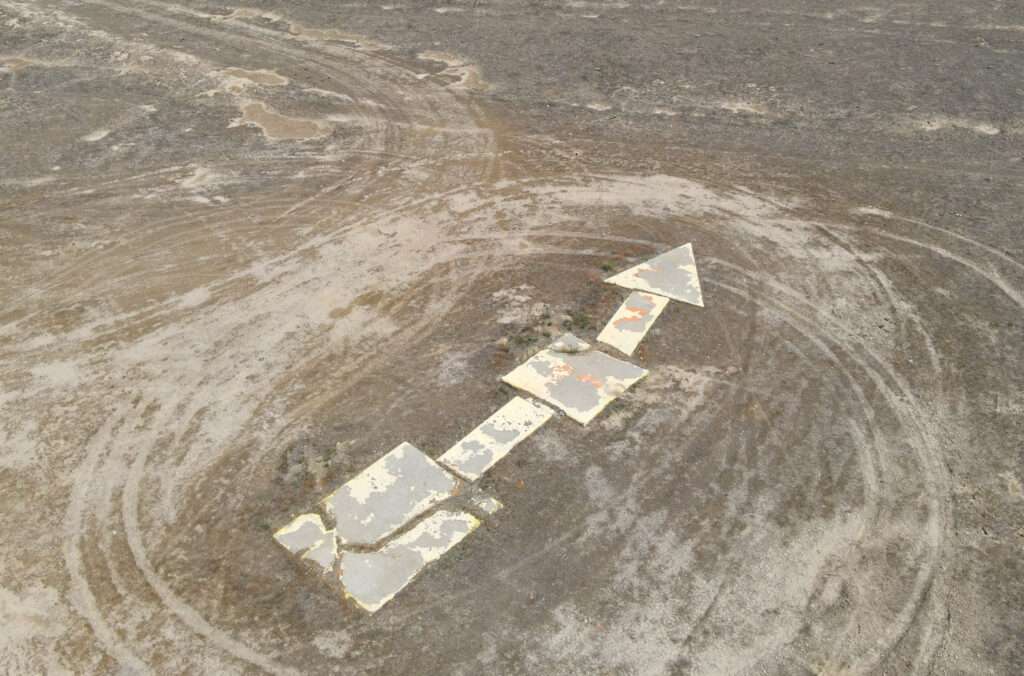
Many beacons were abandoned or torn down for scrap metal. Development, weather and vandals took their toll on the concrete arrows. During WWII, some arrows were destroyed to prevent the enemy from using them to cross the country.
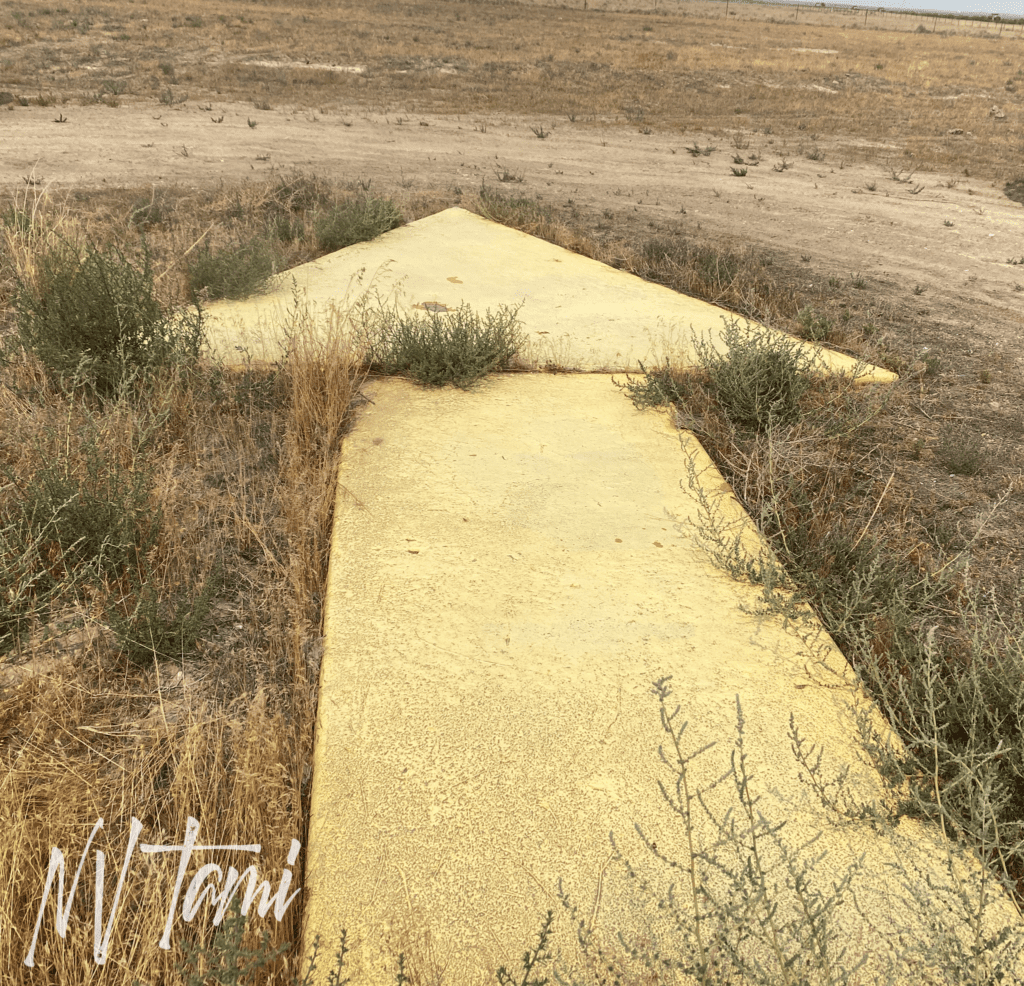
Oreana airmail arrow
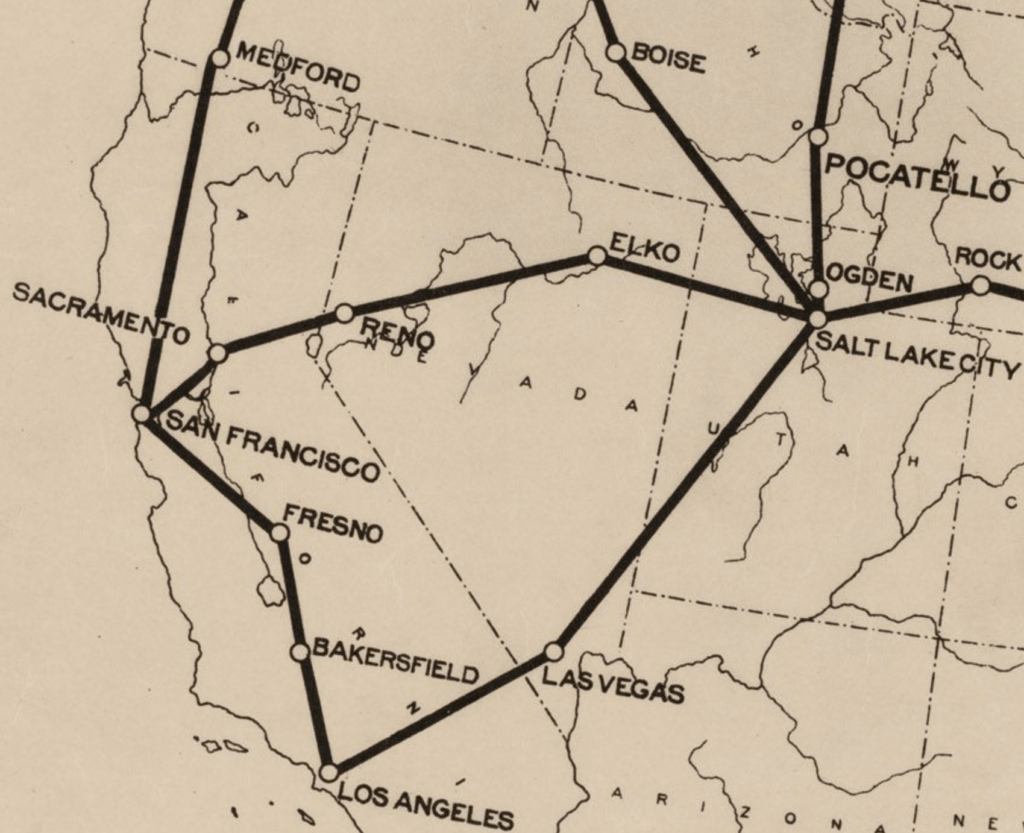
Nevada has two airmail routes that cross the state, linking Salt Lake City to San Fransisco in the north and Los Angeles on the southern route. The Oreana airmail arrow is #27, between Wimmemucca and Lovelock.
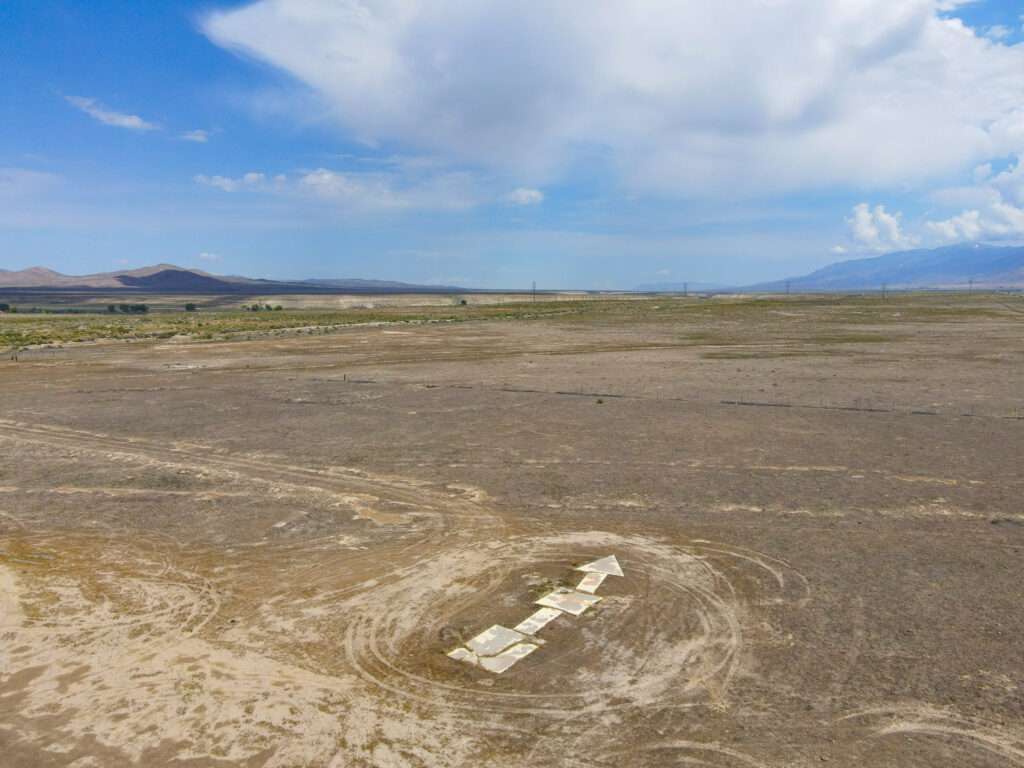
The arrows are a testament to a time when aircraft and radio were new and paper mail was the way most people communicated over long distances. What would the pilots who flew wooden and cloth airplanes have thought about satellite internet, smartphones and instant communications anywhere in the world?
Visited: 8-7-2021, 5-29-2023
References
- Air and Space Mag: What Are Those Giant Arrows Dotting the American Landscape?
- Backcountry Explorers Old Timer Tales: The Express Lines for Mail Delivery During Gold Rush
- Dreamsmith Photos: Arrows Across America
- Google Sightseeing: Airmail Arrows Across the USA
- Nevada Magazine: High-Flying Wayfinding
- Paher, Stanley. Nevada Ghost Towns and Mining Camps. Nevada Publications, 1970. Page 125-126.
- Smithsonian Postal Museum: How Mail Made Commercial Aviation
- Sometimes Interesting: Concrete Arrows and the US Mail Beacon System
- US Postal Service: Airmail: A Brief History
Bill Butran says
This site is amazing! Thanks for doing this!
Tami says
Thank you!
Jenny Kerr says
So fascinating. Now I know what these were for. Thank you.
Tami says
Welcome!
Stephne says
Can you be more precise about the location of the arrow outside Oreana? Any landmarks so you know you’re near it? Thanks.
Tami says
For several reasons, I don’t give specific locations. Coordinates to this arrow are easy to find online.
Bob Thomasson says
This article on the air ail arrows is really great! In all my wanderings I’ve never run across one but I’ll stop and see the Oreana Arrow.
Tami says
Thank you Bob! I am going to translate it into an episode for my radio show. You can find other arrows online, one overlooks Reno. Some towers still exist.
Dave says
I know there is an arrow near I-15, just as it comes into the Las Vegas Valley. “Wonderhussy” has a YouTube video of the time when she climbed to the top of the hill where it is located.
Great history and great post! Keep it up!
Tami says
Thank you, there are lists you can find online about all the arrows and beacons. There is a beacon on a hill close to Oreana but I didn’t have time to visit it. You can find lists that have all the arrows and beacons in Nevada, both the southern and northern routes.